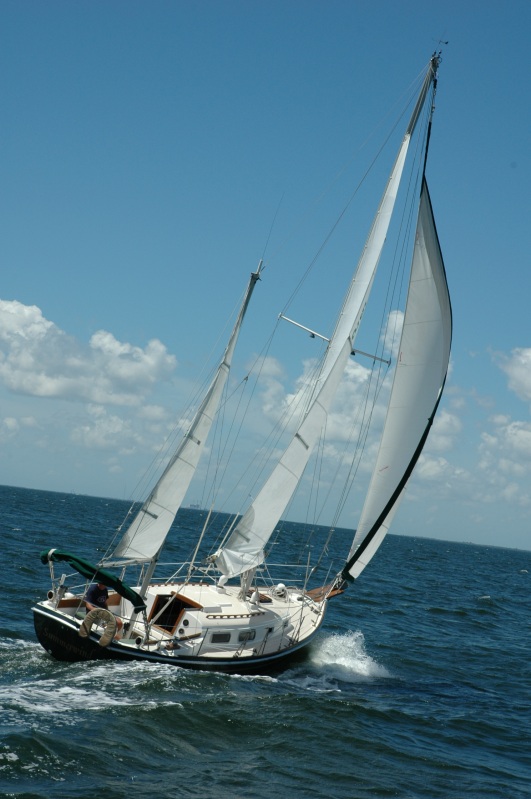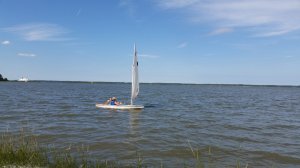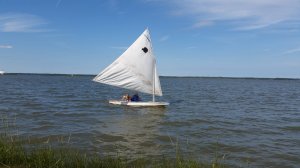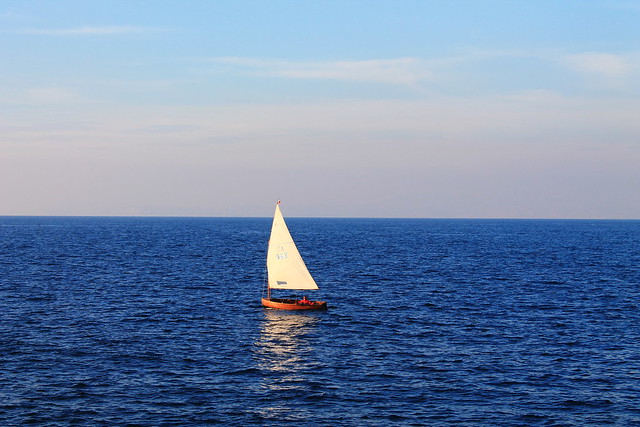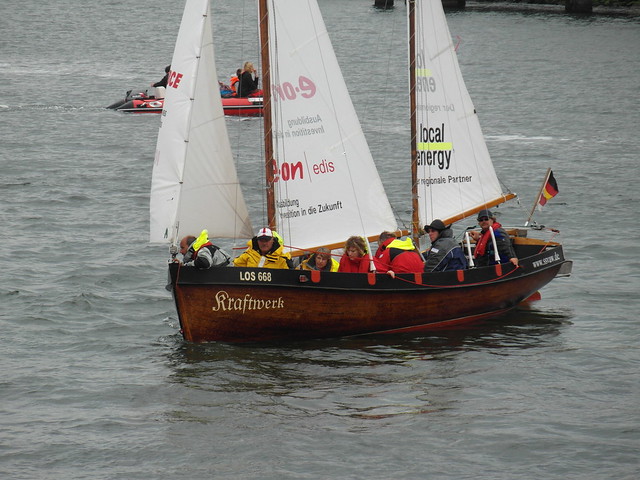Ack! You guys! I’m so sorry. WordPress tells me that people are coming to this site (yay!) but I’ve been incredibly lax in updating it (boo!). The husband, aka boatman extraordinaire, has been deployed with his Coast Guard unit for almost two months so my focus has been elsewhere. However, he has been writing avidly (well, for him) so here is the first of his missives about fixing up our baby:
Step one of making Hull #9 into our dream boat was to make her ready for sea. The biggest problem faced was that #9, formerly “Phoebe M”, formerly “Carousel” was on the hard, 70 miles from our home in Portsmouth, Va. (Editor’s note: 70 miles!?! I had no idea it was that far away! What were we thinking??) We were faced with some hard decisions. 10 years on the hard and her age had done her hull coatings no favors. While she was structurally sound, she was a mess of gel coat failure and untried systems. We made the difficult choice to try and remedy as much as we could while she sat on the hard. It meant a lot of driving. As we saw it, dry and on the hard is ready for hull coatings, so armed with the foreknowledge of many dinghy restorations and one baby keel boat, we set to work. I took a couple of weeks off from keeping a Coast Guard cutter in good shape and started working on our yawl. First steps were aided by friends Cole and Zach, neither of whom are boat wrights per se, but neither of whom shirk when grunt work is called for. Cole helped with a serious cleaning of existing surfaces, and Zach wielded a random orbit sander the following weekend. I can’t thank those fellas enough.
The following week, I degreased the hull one last time and began coating. The primer used was Interlux Epoxy Primecoat. It had a mixed consistency like heavy cream, sopping into the crazing and pinholes very well, and floating on top of itself to level the surfaces.
“All is well”, I thought to myself that first day, but the following morning’s sanding session revealed that there was still fairing work to do. One of the joys of epoxies is the fact that you can fair in between coatings with a minimum of fuss. After washing off the dust and prepping with Interlux’s proprietary solvent, I faired deep scratches with glazing compound, sanded, glazed again, sanded again and solvent washed. The second prime coat went on smoother than the first and, after a very long day, I headed home to Carrie and the boys.
========
It is amazing to me how each morning arriving at the boat feels fresh and new. Even knowing that the days work entails more of the same drudgery, sanding sanding and more sanding. Cutting a tooth into the second prime coat was excruciating as I knew anything less than perfect would reveal itself in the topcoats. There were flaws… There are always flaws. It is one of the beauties of boats, the fact that if you aren’t satisfied, you can look forward to a haulout a few years hence and know you can take another crack at it. When you do, you’ll have another set of experience and you KNOW, it’ll be even better.
I used Interlux Perfection, “Flag Blue.” It color coated very well, with high pigment saturation in the first coat. I returned the following morning, roughed up the first topcoat and began finish painting. I rolled and tipped (not for the first time, I suggest practice before going about this process.) and ultimately was pretty satisfied. After a couple of hours cleaning up my debris, I did a rash thing and painted in the bootstripe while the Perfection was still tacky, using Petit Easypoxy white. I was really impressed with this paint. It flowed well and covered like a dream. I used a long, aluminium batten to mask, laying the edge of the batten into the bootstripe scribe. Local yard neighbors jaws dropped when they saw me start laying the stripe without taping off!
